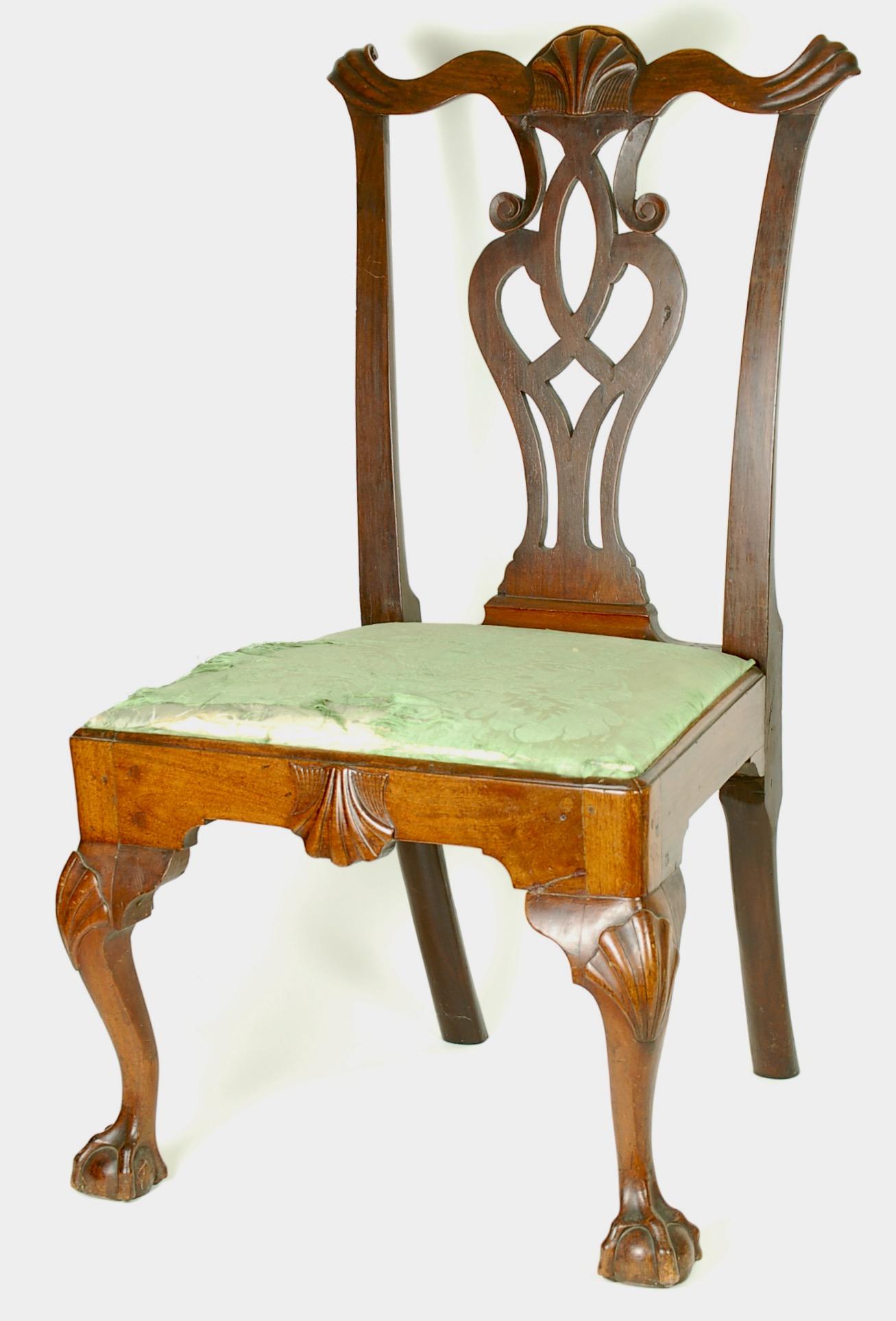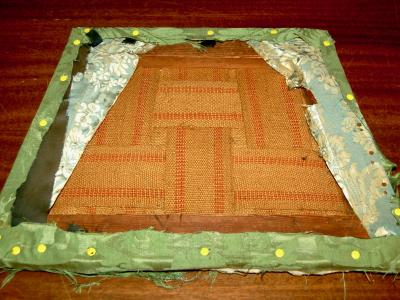Side chair
1755-1775
Measurements
38-3/8 in x 23-3/4 in x 20 in
Materials
Walnut; white cedar (corner blocks), hard pine (slip seat)
Credit Line
Historic Odessa Foundation, gift of H. Rodney Sharp
Accession Number
1958.3295
Inscription
“V” is chiseled into the seat rabbet of the front seat rail; “VI” is chiseled into the slip seat. “F. S. Gemple” (?) is written in pencil on the inside face of the front slip seat rail.
Condition Notes
The back of the crest rail split on the left side where the rear stile tenons into it out. It has been repaired with what appears to be the original wood. A sawcut, possibly an original maker’s error, runs through the back of the center drop of the front rail on which the applied shell is glued. Although exhibiting aged surfaces, all of the corner blocks inside the seat frame appear to have been repaired, if not replaced many, many years ago.
Provenance
Ex coll. H. Rodney Sharp
Comments
This side chair has a strapwork splat of one of the earliest pierced designs, although it remained in use for a long time. In keeping with that general timeframe, the wavy crest rail has a shell carved into the center, carved ears that roll backwards, carved shells on cabriole legs ending in claw-and-ball feet, and a carved shell applied to the center of the front seat rail. The front and side seat rails are undercut to lighten their appearance. The rear legs are oval in cross-section, and the side rails tenon through the rear stiles. All of these features conform to Philadelphia chair-making immediately after mid-century, but one detail is an anomaly: the carved crest-rail ears have a carved crease that runs down their center dividing them bilaterally. Urban Philadelphia carved ears have a massing along the center line with smaller massings at each side.

